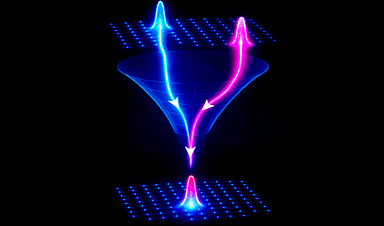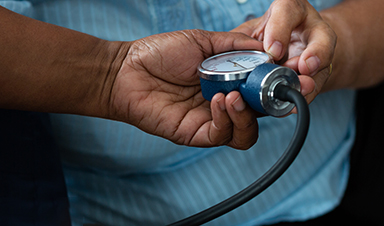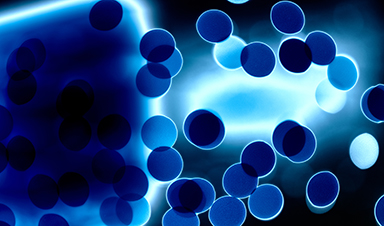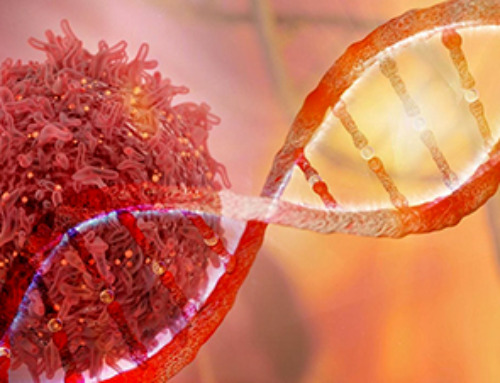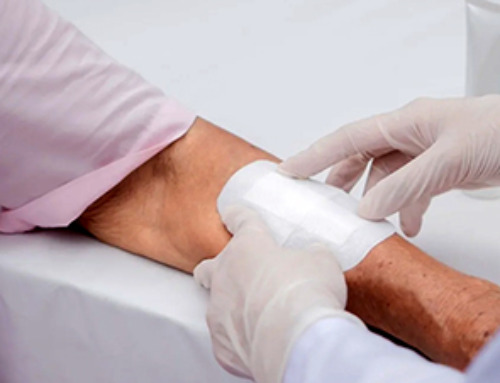Methacrylate-based materials are often used in bone cement and dental resins. However, they have high failure rates as they undergo damage within ten years, impacting the quality of patient’s life and increasing healthcare costs.
Although replacing methacrylate-based materials with self-healing resins and bone cement could increase lifespan, reduce costs, and enhance patient outcomes, the practical applicability of these materials is limited due to their low efficacy and toxicity. An article published in the journal ACS Omega addressed this issue by developing a dual nanocapsule-based self-healing system.
Two polyurethane (PU) shell-based nanocapsules were synthesized: an initiator capsule containing benzoyl peroxide and butylated hydroxytoluene and a monomer capsule containing triethylene glycol dimethacrylate.
Resins with these nanocapsules were tested under tension until failure, followed by assembling the fractured surfaces. 33% of samples showed self-healing behavior and could be reloaded for testing under tension. The capsules and their components were biocompatible with Caco-2 cell lines, suggesting in vivo tolerance of the prepared nanocapsules.
Nanocapsules as Self-Healing Materials
Self-healing materials, when damaged through thermal, mechanical, and ballistic effects can heal and restore materials to their original properties. Few materials intrinsically possess this self-healing ability, which is a valuable characteristic in designing systems since it effectively expands the lifetime use of the product and has desirable economic and human safety attributes.
These self-healing materials could be useful in methacrylate-based systems, including dental resins and bone cement. Aseptic loosening of bone cement by forming cracks may trigger inflammation and bone resorption, requiring expensive surgical intervention. Although modern dental resins prevent any effects on the environment and health with mercury, their poor durability causing implant damage within ten years, has increased the cost of dental care.
Nanocapsules are hollow sphere structures with submicrometer dimensions. Such nanocapsules can accommodate large quantities of guest molecules within their empty core domain. These materials could be helpful in applications in the fields of biological chemistry, synthesis, and catalysis.
Polymeric nanocapsules with a multitude of applications have already been proposed, such as confined reaction vessels, drug carriers, protective shells for cells or enzymes, transfection vectors in gene therapy, carrier systems in heterogeneous catalysis, dye dispersants, or as materials for removal of contaminated waste.
Methacrylate-based nanocapsules are easy to implement for self-healing properties in both dental resins and bone cement due to their filler particles that enhance the material’s mechanical properties. Initially, the nanocapsules simply act as an additional filler. However, when a crack propagates through the material, it breaks and releases components into the crack through capillary action that polymerizes later to heal the matrix.
Biocompatible Nanocapsules with Self-Healing Capacity
Nanocapsules were hypothesized to undergo a robust self-healing process with less impact on the mechanical properties than larger particles. Thus, the present work aimed to investigate single and dual nanocapsule systems based on PU and nontoxic components.
The impact of the prepared single and dual nanocapsules on the self-healing process of methacrylate resins was determined by synthesizing PU nanocapsules, which encapsulate either the initiator or monomer. Furthermore, the mechanical testing and biocompatibility analysis determined the system’s feasibility as a self-healing additive for bone cement and dental resins.
The monomer used here was TEGDMA, with a long shelf-life and quick polymerization capability. The healing liquid was expected to have low viscosity to flow through cracks of resin and fill it. Hence, TEGDMA was previously used as a dental monomer.
Here, using butylated hydroxytoluene (BHT) along with benzyl peroxide (BPO) prevented the formation of free radicals before their release from the capsule. Thus, the initiator component based on BPO and BHT increased the stability of the dual-capsule-based self-healing system.
The fracturing of nanocapsules was an important finding of the present work since their rupture was the basis for the self-healing process. While a too-thick shell did not allow the capsule to rupture, a too-thin shell resulted in fragile nanocapsules.
Conclusion
Overall, PU nanocapsule encapsulating TEGDMA monomer was embedded into an epoxy resin. These embedded resins were compared with their blank counterparts to determine the effects of monomer nanocapsules on the resin’s mechanical properties.
Comparing the elastic modulus, yield stress, ultimate tensile stress, and strain to fracture indicated that the resin without monomer capsules was stronger than the resin with monomer capsules. The monomer nanocapsules cracked during the resin fracture, proving the self-healing effect of the nanocapsules in resins.
Moreover, premature cracking of resins in the gastrointestinal tract did not cause any detrimental effects on the patient, suggesting the biocompatibility of the developed self-healing system. Furthermore, a small degree of self-healing capacity was observed in the resins with monomer nanocapsules, unencapsulated BPO, and the resins with monomer nanocapsules, and initiator capsules.
New nanomedicine wipes out leukemia in animal study
In a promising advance for cancer treatment, Northwestern University scientists have re-engineered the molecular structure of a common chemotherapy drug, making it dramatically more soluble and effective and less toxic. In the new study, [...]
Mystery Solved: Scientists Find Cause for Unexplained, Deadly Diseases
A study reveals that a protein called RPA is essential for maintaining chromosome stability by stimulating telomerase. New findings from the University of Wisconsin-Madison suggest that problems with a key protein that helps preserve chromosome stability [...]
Nanotech Blocks Infection and Speed Up Chronic Wound Recovery
A new nanotech-based formulation using quercetin and omega-3 fatty acids shows promise in halting bacterial biofilms and boosting skin cell repair. Scientists have developed a nanotechnology-based treatment to fight bacterial biofilms in wound infections. The [...]
Researchers propose five key questions for effective adoption of AI in clinical practice
While Artificial Intelligence (AI) can be a powerful tool that physicians can use to help diagnose their patients and has great potential to improve accuracy, efficiency and patient safety, it has its drawbacks. It [...]
Advancements and clinical translation of intelligent nanodrugs for breast cancer treatment
A comprehensive review in "Biofunct. Mater." meticulously details the most recent advancements and clinical translation of intelligent nanodrugs for breast cancer treatment. This paper presents an exhaustive overview of subtype-specific nanostrategies, the clinical benefits [...]
It’s Not “All in Your Head”: Scientists Develop Revolutionary Blood Test for Chronic Fatigue Syndrome
A 96% accurate blood test for ME/CFS could transform diagnosis and pave the way for future long COVID detection. Researchers from the University of East Anglia and Oxford Biodynamics have created a highly accurate [...]
How Far Can the Body Go? Scientists Find the Ultimate Limit of Human Endurance
Even the most elite endurance athletes can’t outrun biology. A new study finds that humans hit a metabolic ceiling at about 2.5 times their resting energy burn. When ultra-runners take on races that last [...]
World’s Rivers “Overdosing” on Human Antibiotics, Study Finds
Researchers estimate that approximately 8,500 tons of antibiotics enter river systems each year after passing through the human body and wastewater treatment processes. Rivers spanning millions of kilometers across the globe are contaminated with [...]
Yale Scientists Solve a Century-Old Brain Wave Mystery
Yale scientists traced gamma brain waves to thalamus-cortex interactions. The discovery could reveal how brain rhythms shape perception and disease. For more than a century, scientists have observed rhythmic waves of synchronized neuronal activity [...]
Can introducing peanuts early prevent allergies? Real-world data confirms it helps
New evidence from a large U.S. primary care network shows that early peanut introduction, endorsed in 2015 and 2017 guidelines, was followed by a marked decline in clinician-diagnosed peanut and overall food allergies among [...]
Nanoparticle blueprints reveal path to smarter medicines
Lipid nanoparticles (LNPs) are the delivery vehicles of modern medicine, carrying cancer drugs, gene therapies and vaccines into cells. Until recently, many scientists assumed that all LNPs followed more or less the same blueprint, [...]
How nanomedicine and AI are teaming up to tackle neurodegenerative diseases
When I first realized the scale of the challenge posed by neurodegenerative diseases, such as Alzheimer's, Parkinson's disease and amyotrophic lateral sclerosis (ALS), I felt simultaneously humbled and motivated. These disorders are not caused [...]
Self-Organizing Light Could Transform Computing and Communications
USC engineers have demonstrated a new kind of optical device that lets light organize its own route using the principles of thermodynamics. Instead of relying on switches or digital control, the light finds its own [...]
Groundbreaking New Way of Measuring Blood Pressure Could Save Thousands of Lives
A new method that improves the accuracy of interpreting blood pressure measurements taken at the ankle could be vital for individuals who are unable to have their blood pressure measured on the arm. A newly developed [...]
Scientist tackles key roadblock for AI in drug discovery
The drug development pipeline is a costly and lengthy process. Identifying high-quality "hit" compounds—those with high potency, selectivity, and favorable metabolic properties—at the earliest stages is important for reducing cost and accelerating the path [...]
Nanoplastics with environmental coatings can sneak past the skin’s defenses
Plastic is ubiquitous in the modern world, and it's notorious for taking a long time to completely break down in the environment - if it ever does. But even without breaking down completely, plastic [...]













